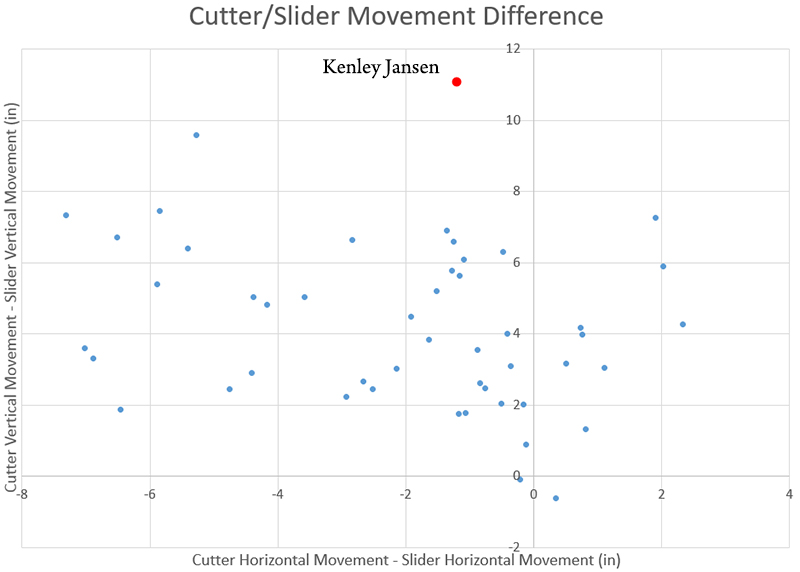It’s Saturday night. There was supposed to be a game tonight but there wasn’t. Instead, I’m sitting here thinking about the way last night’s game ended.
Overnight, Tim Brown of Yahoo Sports wrote a fantastic article about Kenley Jansen‘s final pitch of his five out save to close out game one of the NLDS. After throwing 26 consecutive cutters to begin the outing, Jansen’s final pitch was a slider to Jayson Werth. Here is that pitch:
Brown did a much better job of covering the thought process behind that pitch than I ever could, so I will refer you to that article. I’ve also covered Jansen’s slider before, back in 2014. At that point, Jansen was throwing the pitch more than ever. The same day I wrote that article, Justin Upton hit a home run an estimated 416 feet on a hung slider, which blew Jansen’s save opportunity. The Dodgers went on to win in the tenth.
Still, there’s one thing that article missed which is worth revisiting. Cutters and sliders are supposed to be about the same. They’re often confused for each other since they usually have similar breaks and give batters similar looks. This is why you’ll sometimes hear announcers call Clayton Kershaw‘s slider a cutter and so on. Sliders sink a little more, but not a lot.
However, as Jansen has shown occasionally this season, his cutter and slider are not the same. The horizontal movement is close, but as you can see by Werth flailing over the top of the pitch, the vertical movement is not. Additional research into Pitch FX data can show that magnitude. In 2016, 49 pitchers threw at least 50 sliders and 50 cutters, classified by Pitch Info. Among those pitchers, their average cutter had 4.2 more inches of positive break than their average sliders. Kenley Jansen’s cutter is well known for its high vertical break, but when compared to the slider it shines even more. The difference in vertical movement between Kenley’s cutter and Kenley’s slider is 11.0 inches, the highest in the majors by far. Incidentally, Mike Bolsinger was second at +9.6 inches. Obviously Jansen has the velocity advantage there.
Since those were a lot of words, here’s the same information conveyed in graph form:
Jansen is by himself. He has no peers.
This is why Jansen’s slider is in the upper 20% or so of pitchers in whiff/swing rate despite not being overpowering in velocity. This is also potential proof that Jansen has another weapon should his cutter velocity start to fade in the coming years. But in the meantime, this is something that hitters will have to consider whenever facing Jansen in the playoffs. His average cutter velocity is as high as it has ever been, and since June he has been striking out nearly two batters per inning. As if batters needed something else to worry about.
 Dodgers Digest Los Angeles Dodgers Baseball Blog
Dodgers Digest Los Angeles Dodgers Baseball Blog
